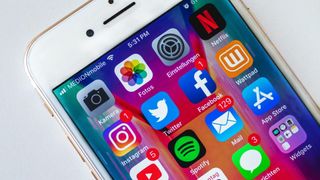8 examples of marketing objectives for small businesses
Not sure where to start with marketing? Adapt these eight tips to your business

As a small business, you know that it can be challenging to pinpoint which marketing activities deliver the most impact. In this article, we give you eight examples of marketing objectives that can guide your strategy and ultimately, your bottom line.
Sometimes, using products designed to optimize your marketing activity can make a huge difference: the best CRM software keeps a record of your customers and pipelines, while tracking the effectiveness of communications and sales reps.
When applying the following examples to your own business, be sure to follow the SMART principle of framing objectives by making them specific, measurable, achievable, realistic, and timely.
1. Enter a new market

Small businesses have both the challenge and luxury of being able to pivot to new markets, as they’re typically more nimble than larger enterprises. Your business may consider new market entry if the competitive landscape has shifted, you’ve had a successful product trial, or the current market isn’t profitable.
The new market, be it a geographical region or a new customer segment, needs to be analyzed to determine key factors, including revenue potential, market share, pricing, and competitive positioning. Then, once the new or improved product is ready to be sold, marketers should develop persuasive messaging to attract new customers.
The advantage of entering new markets is that you learn quick lessons about your customers and can adapt your strategy accordingly. For example, a B2B consultancy business looking to expand beyond Europe may need to adapt to different customs and marketing preferences. Teams should remain open-minded and curious and be ready to pivot existing plans in favor of customer-driven learnings.
2. Leverage new channels to market

A channel to market is a physical or digital way to get your goods sold. For example, if your business sells handmade ornaments, you can have a physical shop as a direct channel and online marketplaces like eBay or Etsy as indirect channels.
Are you a pro? Subscribe to our newsletter
Sign up to the TechRadar Pro newsletter to get all the top news, opinion, features and guidance your business needs to succeed!
When selecting the channels to market for your business, it’s important to consider how they may impact your market share, reputation, and pricing model. For example, an intermediary reseller may have a huge customer base that they can sell your products to, but you may have limited control over the price markup or promotional materials.
Alternative channels to market include social media platforms, which offer rapidly evolving commercial tools, such as check-outs and payment processing. For example, Instagram is a popular channel for selling physical goods, particularly fashion, and food and drinks.
3. Increase brand awareness

By improving your audience’s awareness of your business, you’re adding new prospects to the top of your sales funnel. The first thing to nail down is your brand voice: once you’ve got a defined product and a target market, your marketing and sales material must be consistent across all channels.
For example, if a brand has a professional and impersonal tone of voice in their written copy but a fun and colorful design in their photographic assets, the initial impact on the buyer may be confusing. A successful brand voice can usually be summed up in about three words—such as “bold,” “active,” and “inspiring”—and is centered on what the product can bring to the customer.
Tracking key metrics for brand awareness helps you optimize your message and audience segments. These will differ according to the business model. For example, an outdoor billboard campaign might track foot traffic in the ad’s vicinity, while a paid ad on search engines or social media measures the number of views and clicks.
4. Generate new leads

When your sales funnel is not generating as many deals as you’d like, it may be time to bring in new leads. The word “lead” generally implies that there has been a qualification stage and that the potential customer is in need of what you’re selling.
For example, a B2B company might set up a lead magnet, such as an e-book download form on their website, while a B2C could collect email sign-ups for an educational newsletter. The key with lead generation is to reward prospects for their time—and for their contact details. This is an opportunity for undecided buyers to learn more about your products and values and the industry.
Whatever channels you’re generating leads from—web forms, social media, online and physical events, etc.—it’s vital to track their engagement because this can inform your sales approach. For instance, a contact who’s never opened an email from your team is unlikely to respond well to a hard sell over the phone, but an in-depth conversation at a face-to-face event with a sales rep can be followed up with a conference call about product specifications.
To track details about leads and buying journeys, you should consider using a CRM software or email marketing product.
5. Improve customer retention

Getting prospects to buy in the first place is hard work, so pat yourself on the back if you can get them to buy again. Improving customer retention not only involves a revenue boost, but it also saves on the cost of attracting new buyers.
The first step is to offer outstanding products and customer service. At a B2B, this could include delivering on time and on budget and having regular check-ins. A B2C may want to minimize delivery times and ensure a frictionless user experience on its app and website. Then, aim to overdeliver: popular strategies include adding a freebie to the order and hyper-personalizing communications to the customer demographic.
Use the sales metrics provided by your ecommerce platform or invoicing software to understand your customers’ spending patterns and to track the effectiveness of your retention strategy.
6. Optimize organic online traffic

With organic traffic, you may not be spending your ad budget, but you do need to set up touchpoints to pique viewers’ interest during their product search.
One way of doing it is through search engine optimization (SEO). You want your website to rank as high as possible for keywords related to your business, such as “organic cotton shirt” or “alternative to Photoshop.” While the vastness of SEO techniques can make up multiple articles, quickfire recommendations include minimizing website loading speed, testing your website’s keyword use, and uploading new content, such as blog posts.
Other channels where people can find you include publications, social media platforms, and emails. Sometimes, incentivizing customers and affiliates to promote your business through discounts or prizes can help boost organic traffic. Make sure to track where web traffic originates from in order to understand what channels work best for your audience.
7. Increase ROI

Marketing budgets often get cut due to return on investment (ROI) not being effectively measured. To avoid this, you should track customer journeys meticulously, from initial awareness to purchase, so you can estimate how much revenue you received from a certain investment category. Improving this number requires increasing the number of customers and how much they spend with you.
For example, your CRM records could show that revenue is maximized when prospects are engaged at an industry event and then sent a follow-up email campaign. You can use this information to create personalized campaigns for other event contacts, thus raising the ROI for event marketing.
You can also track the ROI of more niche activities, such as traffic sources. A/B testing is a popular method to optimize communications—such as email campaigns—by changing one feature at a time to determine which gets better results.
8. Automate operational tasks

While marketing’s main purpose is to help generate new business, optimizing your operations can free up time to think more creatively and create better strategies. Automating manual tasks is a good start, and not just because it saves resources: it also provides valuable metrics about customer behavior and team efficiency.
For example, many companies still send manual emails and compile engagement reports from scratch. With an email marketing software—such as Mailchimp or Zoho Campaigns—you can save templates, mass-email thousands of contacts, and instantly track open rates, click rates, unsubscribes, and more.
Furthermore, a CRM program—such as Hubspot CRM or Salesforce—can automate sales rep assignments, lead attractiveness scores, and changes in pipeline status.
Main takeaways and next steps
Marketing works hand in hand with sales to deliver revenue to the business.
Brand awareness, lead generation, and traffic optimization activities aid buying decisions and create repeat business through customer retention.
Careful design of the market strategy should be paired with tracking metrics along the buying journey, such as email open rates and web traffic origination.
That way, you know which strategy is delivering and where the ROI is coming from.
You can learn more from our marketing 101 for small businesses guide and our guide to digital marketing. You can also read about small business marketing strategies and our feature on marketing automation.
Ioana holds a BSc in Business Management from King's College London and has worked for 4+ years as a management consultant in the industries of technology, media and telecoms. Ioana is also a successful entrepreneur, having launched several social enterprises. Writing interests include market research and planning, start-up culture and ethics, agile methodology, and financial modelling. No stranger to tech and hackathons, she is also an accomplished fintech and SaaS writer
Most Popular


